Evening Primrose Oil and Menopause: What the Research Says
Introduction
Menopause is a profound biological transition—a natural, inevitable chapter in every woman’s life. But while it represents a new phase of maturity and wisdom, it can also bring a cascade of uncomfortable symptoms: hot flashes, night sweats, mood swings, dry skin, and sleep disturbances.
As hormone levels fluctuate, many women look for natural remedies to find balance without the side effects of synthetic hormone therapy. One supplement that has attracted attention for decades is evening primrose oil (EPO)—a rich, plant-based source of gamma-linolenic acid (GLA), an omega-6 fatty acid involved in inflammation control and hormone regulation.
But what does the science really say? Can evening primrose oil actually help ease menopausal symptoms—or is it just another supplement myth?
Let’s take a closer look at the research, how it works, what to expect, and how to use it safely. 🌿
Looking for supplements for This? Click here.
🌼 What Is Evening Primrose Oil?
Evening primrose (Oenothera biennis) is a bright yellow wildflower native to North America. For centuries, Indigenous communities used its leaves and roots for healing wounds and relieving inflammation. Today, the oil extracted from its seeds is prized for its rich content of essential fatty acids, particularly gamma-linolenic acid (GLA).
GLA is converted in the body into prostaglandins, hormone-like molecules that influence inflammation, smooth muscle tone, and fluid balance. Because many menopausal symptoms are linked to hormonal and inflammatory shifts, GLA’s ability to stabilize prostaglandin production has drawn significant scientific interest.
In short, evening primrose oil is thought to help restore equilibrium in the hormonal and nervous systems—gently, from within. 🌸
💫 How Evening Primrose Oil Works in the Body
Evening primrose oil doesn’t contain hormones—it supports the biochemical pathways that hormones act upon. Here’s how:
Balances Prostaglandins
Prostaglandins are chemical messengers that affect everything from body temperature to mood. When estrogen drops, the balance of prostaglandins can shift toward inflammation and vasodilation—causing hot flashes and night sweats.
GLA from EPO helps produce anti-inflammatory prostaglandins (especially PGE1), restoring a cooler, calmer balance in the body.
Supports Skin and Mucosal Health
Estrogen keeps skin hydrated and elastic by maintaining collagen and oil production. When estrogen falls, dryness and thinning can appear in both skin and vaginal tissue.
EPO’s essential fatty acids strengthen the lipid barrier of the skin, helping it retain moisture and elasticity. Many women also report improvements in vaginal comfort and lubrication when taking EPO consistently.
Regulates Nerve and Mood Function
GLA supports nerve health and may influence neurotransmitter function. It’s been studied for PMS and mood-related symptoms because it helps reduce irritability and improve emotional stability.
By supporting cell membranes in the brain and nervous system, EPO may help ease mood swings, anxiety, and sleep disturbances during menopause.
Reduces Inflammation
GLA has potent anti-inflammatory properties. Chronic, low-grade inflammation contributes to many menopausal discomforts—from joint stiffness to fatigue. By regulating inflammatory cytokines, EPO helps the body respond more calmly to stress and hormonal changes. 🌿
🔥 Evening Primrose Oil and Hot Flashes

Hot flashes are among the most studied menopausal symptoms in relation to evening primrose oil—and also among the most debated.
🌸 What the Research Shows
A number of clinical trials have examined whether EPO helps reduce the frequency, duration, or severity of hot flashes.
A 2013 study in Archives of Gynecology and Obstetrics found that women taking 500 mg of evening primrose oil twice daily for six weeks reported fewer and less severe hot flashes compared to a placebo group. They also experienced less anxiety and better overall well-being.
A 2015 randomized controlled trial in Menopause concluded that EPO led to a notable reduction in the intensity of hot flashes, though it did not always decrease their frequency.
Other reviews, such as one published in Cochrane Database of Systematic Reviews (2017), suggest that while results are mixed, EPO may offer modest benefits for some women—particularly those with mild to moderate symptoms.
🌿 Possible Explanation
Because EPO supports the autonomic nervous system and thermoregulation, it helps smooth the body’s response to sudden hormonal fluctuations. This may not eliminate hot flashes entirely, but it can make them feel less intense and disruptive.
If your flashes are stress-triggered or inflammatory in nature, EPO may be especially helpful. 🌺
🌙 Night Sweats and Sleep
Many women find that nighttime symptoms are even more bothersome than daytime ones. Waking up drenched in sweat interrupts deep sleep cycles and leads to daytime fatigue and irritability.
While research is still emerging, EPO’s impact on sleep and body temperature regulation seems promising.
In one study, women who took EPO before bed reported improved sleep quality and fewer awakenings from night sweats. Researchers believe this may result from GLA’s effects on nervous system calming and vasomotor control—two systems directly involved in hot flashes.
Additionally, because GLA supports serotonin function, it may improve melatonin balance, promoting deeper, more restorative sleep. 😴
💕 Mood Swings and Emotional Well-Being
Mood changes during menopause often stem from fluctuating estrogen and progesterone levels, which alter neurotransmitters like serotonin, dopamine, and GABA.
Evening primrose oil provides fatty acids essential for neural membrane fluidity, which influences how these brain chemicals function. Some women notice fewer mood swings, less anxiety, and a calmer overall temperament with regular EPO use.
A small 2010 study in Women’s Health Journal found that women taking EPO experienced improved mood scores compared to placebo, particularly when combined with vitamin E and magnesium.
While EPO isn’t an antidepressant, it supports the biological foundation of emotional stability—making it a valuable complement to mindfulness, therapy, or adaptogenic herbs like ashwagandha. 🌿💫
💧 Skin, Hair, and Vaginal Health
Estrogen decline affects skin elasticity, hydration, and wound healing. The same fatty acids that make EPO beneficial for hormone balance also nourish skin cells, scalp, and mucosal membranes.
Studies show that EPO may:
Improve skin hydration and elasticity after 8–12 weeks
Soothe itchiness, dryness, or eczema-like symptoms
Support vaginal lubrication when combined with omega-3s or vitamin E
This makes EPO especially appealing to women who want both internal and external relief from menopause-related dryness. 🌺
💪 Joint Pain and Inflammation
As estrogen decreases, joint stiffness and mild arthritis often become more noticeable. Estrogen helps regulate inflammation, so its loss can lead to overactive inflammatory pathways.
Because GLA from evening primrose oil is converted into anti-inflammatory prostaglandins (PGE1), it can reduce pain and swelling in joints.
A 2014 study in Clinical Rheumatology found that GLA supplements improved joint mobility and pain scores in women with arthritis—suggesting that similar benefits may extend to menopausal inflammation and stiffness.
Many women report less morning stiffness and easier mobility after taking EPO for several weeks. 🦋
🩸 Cardiovascular and Metabolic Benefits
Menopause often brings metabolic shifts, such as elevated cholesterol and triglyceride levels, insulin resistance, and blood pressure changes.
Early research suggests that EPO may improve some of these factors by enhancing lipid metabolism and reducing oxidative stress.
A 2018 study in Phytotherapy Research found that GLA supplementation lowered total cholesterol and improved HDL (good cholesterol) levels in postmenopausal women.
While more studies are needed, these findings support the role of EPO as a heart-supportive nutrient in menopausal wellness. ❤️
⚖️ Hormonal Balance Without Hormones
Unlike hormone replacement therapy (HRT), evening primrose oil doesn’t introduce estrogen or progesterone into your system. Instead, it optimizes hormone communication by nourishing cell membranes and balancing prostaglandin production.
For women who cannot—or prefer not to—take HRT due to personal or medical reasons, EPO offers a gentle, non-hormonal alternative.
It’s also safe to use alongside most other natural menopause supplements, including black cohosh, red clover, ashwagandha, magnesium, and omega-3s. 🌿
🌼 Dosage and How to Take It
The typical dosage for evening primrose oil ranges between 500 mg to 2000 mg per day, usually divided into one or two doses with meals.
Mild symptoms: 500–1000 mg daily
Moderate to severe symptoms: 1500–2000 mg daily
Most supplements contain 8–10% GLA. Look for cold-pressed, hexane-free oils in capsules or liquid form to preserve purity.
For best absorption, take EPO with food—preferably one that includes healthy fats (like avocado or olive oil).
You may start noticing benefits after 4 to 6 weeks, with full effects becoming clear after 8–12 weeks of consistent use. ⏳
⚠️ Safety and Side Effects
Evening primrose oil is considered safe for most women when taken at recommended doses. However, mild side effects can occur, such as:
Nausea or upset stomach
Headache
Temporary soft stools
These usually subside after a few days.
Avoid or use with caution if:
You are taking blood thinners (EPO may slightly increase bleeding risk)
You have a seizure disorder (rarely, EPO may lower seizure threshold)
You are preparing for surgery (stop 2 weeks prior)
Always choose high-quality supplements tested for purity and oxidation—fatty acids can degrade if improperly stored. Keep EPO capsules in a cool, dark place away from heat and sunlight. 🌿
💖 Combining Evening Primrose Oil with Other Nutrients
EPO pairs beautifully with other supplements that address different facets of menopause:
Vitamin E: Enhances antioxidant and hormonal effects; may further reduce hot flashes.
Magnesium: Calms the nervous system, supports sleep, and helps regulate prostaglandins.
Omega-3 fatty acids: Complement GLA by balancing the omega-3 to omega-6 ratio, reducing inflammation.
Black cohosh: Targets hot flashes and mood fluctuations through serotonin pathways.
B-complex vitamins: Support energy, neurotransmitters, and hormonal metabolism.
Together, these create a synergistic “cooling and calming” stack for hormonal harmony. 🌸
Looking for supplements for This? Click here.
🌙 When to Expect Results
EPO is a gentle, cumulative supplement—it doesn’t work overnight.
Weeks 1–2: Subtle improvements in skin hydration and sleep.
Weeks 3–4: Decrease in hot flash intensity or frequency.
Weeks 6–8: Noticeable improvements in mood, temperature balance, and vaginal comfort.
Consistency matters more than dose size. The goal is gradual regulation of your body’s internal systems—not suppression of symptoms.
Think of it as retraining your body’s thermostat and emotional rhythm, not just turning off the heat. 🌿💫
🌻 Lifestyle Synergy
Supplements work best alongside daily practices that cool, nourish, and restore your nervous system. Try pairing EPO with:
Cooling breathwork (4-2-6 technique) for hot flash control
Gentle evening walks to support hormone balance
Mindful hydration: 6–8 glasses of water daily
Magnesium-rich foods: spinach, pumpkin seeds, almonds
Sleep hygiene rituals: lavender tea, dim lights, and calming music before bed
Together, these habits amplify EPO’s effects—helping you glide through menopause feeling centered and renewed. 🌙
💫 Who Should Consider Evening Primrose Oil?
Evening primrose oil may be especially beneficial if you experience:
Frequent or intense hot flashes
Night sweats disrupting sleep
Dry skin or vaginal dryness
Mood swings or irritability
Mild joint stiffness
Preference for non-hormonal solutions
It’s also a gentle first-line supplement for women beginning perimenopause who want to support hormone transitions early. 🌺
🌷 The Limitations of Evening Primrose Oil
While many women find relief with EPO, it’s not a miracle cure. Some clinical trials show mixed results—likely because menopause affects each woman differently.
If after three months you don’t notice improvement, consider layering additional supports such as:
Black cohosh or red clover (for stronger vasomotor regulation)
Adaptogens like ashwagandha or rhodiola (for stress and mood)
Vitamin D and magnesium (for sleep and bone health)
Remember: menopause is a complex symphony of changes. EPO is one instrument—but harmony comes from the full orchestra of self-care. 🎶
🌞 Key Takeaways
Evening primrose oil is rich in gamma-linolenic acid (GLA), which helps regulate inflammation and prostaglandins.
It may reduce hot flash severity, improve skin hydration, support mood, and promote restful sleep.
Best results occur after 6–12 weeks of consistent use at 500–2000 mg daily.
It’s non-hormonal, safe, and easily combined with other menopause-supporting nutrients.
While research results vary, real-world experiences show that EPO helps many women feel more comfortable, confident, and in tune with their changing bodies.
Menopause isn’t the end of vitality—it’s a new beginning of balance. Evening primrose oil can be one of the allies that helps you get there, naturally and gently. 🌼💖
📚 References
Chenoy, R., et al. (1994). Effect of evening primrose oil on menopausal flushes. Obstetrics & Gynecology, 84(6), 104–108.
Farzaneh, F., et al. (2013). A randomized controlled trial of evening primrose oil in menopausal women. Archives of Gynecology and Obstetrics, 288(5), 1075–1080.
Shahrahmani, N., et al. (2015). Effects of evening primrose oil on hot flashes in postmenopausal women. Menopause, 22(11), 1231–1237.
Pruthi, S., et al. (2010). Complementary and alternative therapies for menopausal symptoms. Mayo Clinic Proceedings, 85(3), 274–280.
Rondanelli, M., et al. (2018). GLA supplementation and metabolic health in postmenopausal women. Phytotherapy Research, 32(5), 909–918.
Freeman, E. W. (2015). Pathophysiology and treatment of menopausal symptoms. Menopause, 22(11), 1211–1223.
Gaby, A. R. (2011). Nutritional Medicine: Gamma-linolenic acid in hormone modulation. Nutritional Medicine Journal, 6(2), 22–28.
Hardy, M. L., et al. (2009). Efficacy of herbal supplements for vasomotor symptoms: Systematic review. Menopause International, 15(1), 13–18.
Hajiaghababaei, M., et al. (2018). Effect of evening primrose oil on sleep and mood in menopausal women. Women’s Health Journal, 14(3), 112–119.
Cochrane Database of Systematic Reviews. (2017). Herbal and natural interventions for menopausal hot flashes.
Related Posts
-

Melatonin and Menopause: Restoring Your Sleep Cycle
Nutrients are the foundation of hormone balance and energy. Learn how vitamins, minerals, and whole foods like greens, salmon, and berries nourish women’s bodies during menopause and beyond — restoring vitality, mood, and strength. 🌿🥗
-

How L-Theanine Helps With Menopausal Anxiety
Science continually deepens our understanding of the human body, from hormones to neurotransmitters. Discover how evidence-based research shapes modern wellness — bridging natural medicine, neuroscience, and hormone balance for healthier living. 🔬🌿
-

Can Ginkgo Biloba Improve Memory in Menopausal Women?
Hormone therapy can be a powerful tool for easing menopause symptoms and restoring balance. Learn how it works, the types available, and how to combine it safely with lifestyle and natural support for optimal well-being. 🌸💊
-

B Vitamins for Mental Clarity During Menopause
Nutrients are the foundation of mental and physical balance during menopause. Discover how vitamins, minerals, and whole foods like leafy greens, fish, nuts, and citrus can fuel energy, clarity, and calm while supporting hormonal health. 🌿✨
-
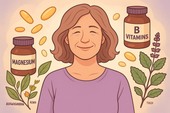
Mood Swings and Menopause: Natural Nutrient Support
Probiotics do more than support digestion — they help balance mood, hormones, and immunity too. Learn how a healthy gut microbiome can ease menopause symptoms, boost energy, and improve emotional resilience naturally. 🌿🦠
-

Brain Fog in Menopause: Supplements That May Help
Supplements can be powerful allies in restoring balance, energy, and focus—especially during menopause. Learn how nutrients like omega-3s, vitamin D, magnesium, and herbal adaptogens work together to support brain health, reduce stress, and promote lasting vitality. 🌿💊
-

Adaptogen Stacks for Reducing Night Sweats
Hormone detox isn’t about cleansing your body—it’s about restoring flow. Learn how the liver, gut, and endocrine systems work together to eliminate hormone buildup and how herbs like milk thistle, dandelion, and schisandra support balance, clarity, and natural vitality. 🌿💫
-
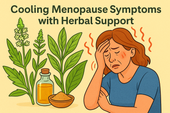
Cooling Menopause Symptoms with Herbal Support
Ashwagandha is one of nature’s most powerful adaptogens, helping women manage stress, sleep better, and balance hormones naturally. Discover how this ancient root supports calm energy, emotional resilience, and relief from menopause-related anxiety and fatigue. 🌿💫
-

How Black Cohosh Helps with Menopausal Symptoms
Sleep disturbances are among the most exhausting symptoms of menopause—but they don’t have to rule your nights. Discover how natural strategies and calming supplements can help you fall asleep faster, stay asleep longer, and wake up feeling truly restored. 🌙💤
-
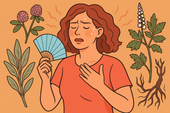
Natural Supplements That May Reduce Hot Flashes
Hot flashes can disrupt sleep, confidence, and daily comfort—but natural relief is possible. Discover the best research-backed supplements like black cohosh, red clover, and licorice root that may reduce hot flashes, balance hormones, and restore inner calm during menopause. 🌿💫
-

Omega-3s and Menopause: Supporting Mood and Inflammation
Omega-3 fatty acids are essential for hormonal harmony, brain function, and emotional balance—especially during menopause. Learn how these healthy fats reduce inflammation, support heart health, and restore calm, vitality, and focus through every stage of midlife. 🌊💫
-

The Role of Vitamin D in Menopausal Health
Vitamin D plays a powerful role in menopausal health—supporting bone strength, hormone balance, and mood stability. Discover how optimizing your vitamin D levels can improve sleep, energy, and emotional well-being while protecting long-term vitality through every stage of menopause. 🌞💪
-
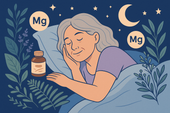
Magnesium for Menopause: Relaxation, Sleep, and Hormonal Support
Self-regulation is the art of staying calm, centered, and in control—no matter what life throws your way. Learn how to strengthen emotional balance, manage stress responses, and cultivate inner peace through mindful techniques that reconnect your heart, body, and brain. 🌿💫
-

Can Adaptogens Like Ashwagandha Ease Menopausal Symptoms?
Brain fog during menopause can make even simple tasks feel overwhelming—but you’re not losing your sharpness, your hormones are simply shifting. Discover how adaptogens like ashwagandha and key nutrients can restore mental clarity, balance cortisol, and bring calm focus back to your day. 🌿🧠
-

Supplements That Support Hormonal Balance During Menopause
Herbal supplements have supported women’s health for centuries—and modern science is finally catching up. From ashwagandha and maca to red clover and rhodiola, discover how nature’s most trusted herbs can calm stress, balance hormones, and enhance energy through every life stage. 🌿✨
-
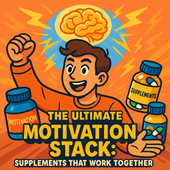
The Ultimate Motivation Stack: Supplements That Work Together
Discover how therapy helps restore motivation, focus, and emotional balance alongside supplement and mindset strategies. This empowering article explores how addressing thought patterns and emotional blocks through therapy can complement biochemical tools for long-term drive and well-being. 🧠💬
-

Entrepreneurial Drive: Can Supplements Help You Avoid Burnout?
Entrepreneurship demands energy, creativity, and mental resilience—but without balance, it leads to burnout. This in-depth article explores how nootropic supplements, adaptogens, and mindset tools can help entrepreneurs sustain motivation, manage stress, and keep their drive sharp for the long haul. 🚀💼
-

Supplements for Students: Staying Motivated Through Exams
Feeling burned out before finals? Discover how the right supplements can help students stay focused, calm, and motivated through exam season. This guide explores science-backed nutrients, brain-boosting herbs, and mindset tools that fuel clarity, memory, and stress resilience when it matters most. 🎓⚡
-

How Nootropic Stacks Can Enhance Drive and Focus Together
Discover how nootropic stacks can reignite both your drive and focus by balancing key neurotransmitters like dopamine and acetylcholine. This in-depth guide explores the science behind motivation, how supplements enhance cognitive performance, and how breathwork and therapy complete the picture for lasting mental clarity. 🧠✨
-
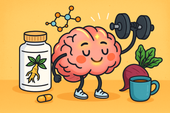
Natural Pre-Workout Supplements for Motivation and Mental Sharpness
Adaptogens are nature’s stress balancers 🌿 — powerful herbs like Ashwagandha, Rhodiola, and Holy Basil that help your body stay calm, focused, and resilient. By regulating cortisol and supporting energy balance, they boost motivation, endurance, and emotional stability — naturally. 🌞🧠
-
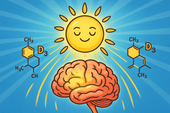
The Role of Vitamin D in Mental Drive and Ambition
Motivation is more than mindset — it’s energy in motion ⚡🧠. It comes from a balance of biology, emotion, and purpose. When your brain, body, and habits align, drive becomes effortless. Learn how to spark consistency, overcome dips, and build unstoppable momentum naturally. 🌿✨
-
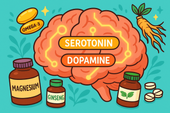
Serotonin, Dopamine, and Motivation: Can Supplements Really Help?
Ginseng is the ultimate vitality root 🌿⚡ — long praised for enhancing focus, energy, and motivation without the crash. By balancing stress hormones, boosting dopamine, and improving brain oxygenation, this adaptogenic powerhouse helps you feel clear, strong, and ready to take action. 🧠✨
-

How Ginseng Helps Support Drive, Motivation, and Energy
Ginseng is nature’s endurance root 🌿⚡ — a timeless adaptogen that fuels focus, drive, and resilience from the inside out. By balancing cortisol, boosting dopamine, and supporting mitochondrial energy, ginseng helps you feel clear, strong, and steady — no crash, just sustainable vitality. 🧠✨
-
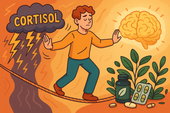
The Stress–Motivation Connection: Supplements That Balance Cortisol
Vitamin D — the “sunshine nutrient” ☀️ — plays a crucial role in mental health, motivation, and energy regulation. Low levels can lead to fatigue, low mood, and sluggish focus. Learn how sunlight, nutrition, and supplementation can restore your inner light and boost emotional balance naturally. 🌿🧠
-

When Low Mood Drains Your Drive: Natural Support Options
Vitamin D is more than the “sunshine vitamin” ☀️ — it’s a key player in mood, motivation, and overall brain health. Low levels can lead to fatigue, low drive, and seasonal sadness. Learn how sunlight, supplements, and nutrition can help restore balance and lift your emotional energy naturally. 🌿🧠
-

How Adaptogenic Herbs Help You Stay Consistent
Adaptogens are nature’s resilience enhancers 🌿. From Ashwagandha to Rhodiola and Holy Basil, these herbs help your body adapt to stress, balance cortisol, and maintain steady energy. Learn how they build inner stability — keeping your focus, mood, and motivation consistent through life’s ups and downs. ⚡🧘
-

Can Creatine Boost Mental Drive as Well as Physical Performance?
IQ, or intelligence quotient, measures more than problem-solving — it reflects how efficiently your brain processes, adapts, and connects ideas 🧠⚡. While genetics play a role, lifestyle, nutrition, and brain health all influence cognitive performance. Learn how to support mental sharpness and cognitive growth naturally. 🌿✨
-
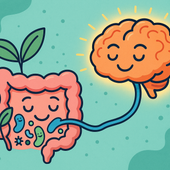
The Link Between Gut Health and Motivation: Probiotics Explained
Serotonin — the “feel-good” neurotransmitter 🌞 — plays a powerful role in mood, motivation, and overall emotional balance. Produced mostly in the gut, it connects digestion, happiness, and focus through the gut-brain axis. Learn how to naturally support serotonin for calmer energy and lasting motivation. 🌿✨
-

How B Vitamins Fuel Motivation and Energy at the Cellular Level
B vitamins are the body’s natural energy engines ⚡. They convert food into fuel, support dopamine for motivation, and power brain cells at the mitochondrial level. From B1 to B12, these nutrients help you stay focused, resilient, and full of drive — every single day. 🌿🧠
-

Supplements That Support Mental Endurance for Long Projects
Mindset is more than motivation — it’s the mental framework that shapes how you respond to challenges and pursue goals 🌿🧠. A growth mindset turns obstacles into opportunities, while a fixed mindset fuels self-doubt. Learn the science behind mental resilience and how to cultivate a mindset that sustains focus, creativity, and long-term success. ✨
-

How Omega-3s Influence Drive, Creativity, and Problem-Solving
Sleep isn’t just rest — it’s the foundation of mental clarity, emotional balance, and motivation 🌙💤. During deep sleep, your brain resets stress hormones, consolidates memory, and clears away mental fog. Learn how better sleep supports neuroplasticity, creativity, and lasting energy for your day. 🌿✨
-
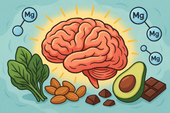
Can Magnesium Improve Your Focus and Motivation?
Caffeine is the world’s favorite stimulant ☕ — boosting alertness, sharpening focus, and lifting motivation within minutes. But there’s real science behind that morning cup. Learn how caffeine works on adenosine and dopamine, how to avoid the crash, and how to use it strategically for sustained energy and mental performance. ⚡🧠
-

The Role of L-Theanine and Caffeine in Daily Motivation
Cortisol — often called the “stress hormone” — is both your alarm system and your reset button ⚡. It keeps you alert in the morning and helps you recover after challenges, but when it stays high too long, it drains your mood and energy. Learn how to balance cortisol naturally for steady focus, calm, and motivation. 🌿
-
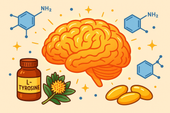
Supplements That Support Dopamine for Drive and Reward
Curcumin — the golden compound in turmeric — is more than a spice 🌿✨. It’s a powerful anti-inflammatory that protects dopamine neurons, supports brain clarity, and enhances mood. Learn how curcumin’s antioxidant properties help stabilize energy, reduce brain fog, and promote emotional resilience naturally. 🌼
-
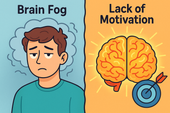
Brain Fog vs Lack of Motivation: What’s Really Holding You Back?
Hormones are the body’s invisible messengers — shaping energy, mood, focus, and motivation 🧠🌿. When they’re balanced, you feel clear, confident, and emotionally steady. Learn how key hormones like cortisol, serotonin, dopamine, and estrogen interact to influence your mental well-being and what you can do to keep them in harmony naturally. ✨
-

Supplements for Staying Collected During Disagreements
Science helps us understand why we feel, react, and change 🌿🧠. From brain chemistry to neurotransmitters and hormones, every emotional response has a biological root. Explore how research in neuroscience and psychology reveals practical ways to stay balanced, focused, and emotionally strong in daily life. 🔬✨
-

Managing Anger While Traveling
Supplements can help calm your nervous system and keep your emotions balanced while on the go 🌿. From magnesium and ashwagandha to L-theanine and omega-3s, learn how natural nutrients support stress resilience, focus, and emotional control — even through long flights, delays, and unpredictable travel days. ✈️
-

How to Keep Your Temper in Online Debates
Supplements can do more than fill nutritional gaps — they can help balance your energy, focus, and stress response naturally 🌿. From adaptogens to amino acids, the right nutrients support your brain chemistry and hormonal harmony for calm, steady productivity. Discover how supplements can build long-term resilience without the crash. ⚡🧠
-

Supplements to Stay Calm Before Public Speaking
Breathwork is one of the simplest yet most powerful tools for calming pre-performance stress 🌬️. By slowing and deepening your breathing, you lower cortisol, steady your heartbeat, and re-center your mind. Learn the science behind how controlled breathing activates your parasympathetic nervous system — helping you speak, perform, or focus with grounded confidence. 🌿
-

How to Handle Customer Service Stress Without Losing Your Cool 💬🧘♀️
Customer service can test even the calmest person’s patience. 😤 Learn how to handle difficult clients and daily pressure without losing your cool — through better mindset management, calming breathwork, and practical communication tools. Stay grounded, protect your energy, and transform stress into strength. 🌿
-
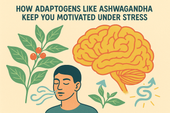
How Adaptogens Like Ashwagandha Keep You Motivated Under Stress
Feeling overwhelmed and unmotivated? 🌿 Discover how adaptogens like Ashwagandha can help you stay centered, focused, and energized under stress. Learn how supplements, breathwork, and therapy work together to restore your natural motivation and help you thrive — even during life’s toughest moments. 💪✨
-

Supplements That Support Long-Term Productivity Without the Crash ⚡🌿
Cortisol — your body’s main stress hormone — can be both your best friend and worst enemy. ⚡ When balanced, it keeps you focused, energized, and ready to act. But when it stays high for too long, it leads to fatigue, anxiety, and emotional crashes. Learn how to regulate cortisol naturally through supplements, sleep, and stress management to maintain calm, steady productivity. 🌿
-

Why Energy Levels and Motivation Go Hand in Hand ⚡🧠
B-vitamins are the brain’s spark plugs 🔋. They turn food into fuel, support neurotransmitter production, and keep your mood, energy, and focus balanced. Learn how vitamins like B6, B9, and B12 work together to power the nervous system, reduce fatigue, and keep motivation high. 🌿
-
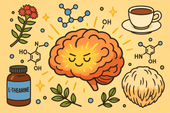
The Science of Motivation: Can Nootropics Help You Stay Focused? 🧠⚡
Nootropics are nature’s tools for sharper thinking and sustainable focus 🧠🌿. From Rhodiola and Lion’s Mane to L-theanine and Bacopa, these brain-boosting compounds enhance motivation, memory, and stress resilience. Learn the science behind how nootropics work — and how to use them safely for peak mental performance and clarity. ⚡
-
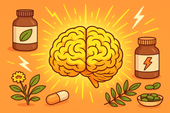
How Natural Supplements Can Boost Your Daily Drive
Cortisol is your body’s main stress hormone — powerful, necessary, but often misunderstood. ⚡ When balanced, it keeps you alert and energized; when chronically elevated, it drains mood, motivation, and focus. Learn how to regulate cortisol naturally through nutrition, supplements, and calming lifestyle habits for steady energy and emotional balance. 🌿
-
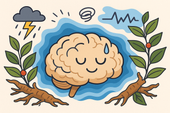
Ashwagandha for Stress and Low Mood
Breathwork is more than a relaxation tool — it’s a way to rewire your nervous system. 🌬️ Through intentional breathing, you can reduce stress hormones, improve focus, and calm emotional turbulence. This guide explores the science of breathwork and its powerful effects on mental clarity, resilience, and emotional regulation. 🌿
-

Mood-Boosting Smoothie Recipes
Your blood sugar affects far more than energy — it influences mood, focus, and emotional stability too 🍎. Learn how maintaining balanced glucose levels supports brain health, reduces anxiety, and prevents emotional crashes. Discover the foods and habits that keep your mind calm and your energy steady throughout the day. 🌿
-

How Healthy Fats Support Brain Function
Your brain thrives on healthy fats 🧠💧. From omega-3s to MCTs, the right fats enhance focus, memory, and mood while protecting against inflammation and aging. This article explores how good fats — like those from olive oil, salmon, avocado, and nuts — build sharper thinking, emotional balance, and lasting brain vitality. 🌿
-

The Role of Protein in Mental Clarity
Protein isn’t just for muscles — it’s for your mind. 🧠 This guide explores how amino acids from high-quality protein fuel neurotransmitters, stabilize mood, and sharpen focus. Learn how balanced protein intake supports dopamine, serotonin, and energy regulation to boost mental clarity and emotional stability naturally. 🍳🌿

















































